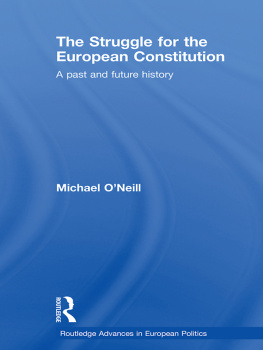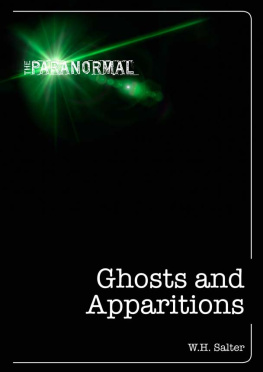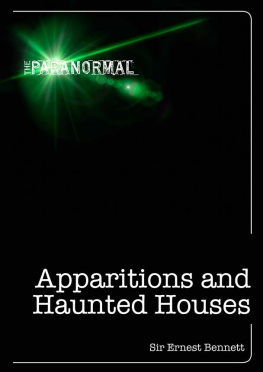Michael ONeill - 20 Answers - Apparitions & Revelations
Here you can read online Michael ONeill - 20 Answers - Apparitions & Revelations full text of the book (entire story) in english for free. Download pdf and epub, get meaning, cover and reviews about this ebook. year: 2017, publisher: Catholic Answers Press, genre: Religion. Description of the work, (preface) as well as reviews are available. Best literature library LitArk.com created for fans of good reading and offers a wide selection of genres:
Romance novel
Science fiction
Adventure
Detective
Science
History
Home and family
Prose
Art
Politics
Computer
Non-fiction
Religion
Business
Children
Humor
Choose a favorite category and find really read worthwhile books. Enjoy immersion in the world of imagination, feel the emotions of the characters or learn something new for yourself, make an fascinating discovery.

- Book:20 Answers - Apparitions & Revelations
- Author:
- Publisher:Catholic Answers Press
- Genre:
- Year:2017
- Rating:5 / 5
- Favourites:Add to favourites
- Your mark:
- 100
- 1
- 2
- 3
- 4
- 5
20 Answers - Apparitions & Revelations: summary, description and annotation
We offer to read an annotation, description, summary or preface (depends on what the author of the book "20 Answers - Apparitions & Revelations" wrote himself). If you haven't found the necessary information about the book — write in the comments, we will try to find it.
20 Answers - Apparitions & Revelations — read online for free the complete book (whole text) full work
Below is the text of the book, divided by pages. System saving the place of the last page read, allows you to conveniently read the book "20 Answers - Apparitions & Revelations" online for free, without having to search again every time where you left off. Put a bookmark, and you can go to the page where you finished reading at any time.
Font size:
Interval:
Bookmark:
20 Answers
g
Apparitions & Revelations
Michael ONeill
20 Answers: Apparitions & Revelations
Michael ONeill
2017 Catholic Answers
All rights reserved. Except for quotations, no part of this book may be reproduced or transmitted in any form or by any means, electronic or mechanical, including photocopying, recording, uploading to the Internet, or by any information storage and retrieval system, without written permission from the publisher.
Published by Catholic Answers, Inc.
2020 Gillespie Way
El Cajon, California 92020
1-888-291-8000 orders
619-387-0042 fax
catholic.com
Printed in the United States of America
978-1-68357-036-3
978-1-68357-037-0 Kindle
978-1-68357-038-7 ePub
Table of Contents
Miraculous messages from God can be attractive, inspirational, and transformative. They can bolster our faith and assure us that God loves us. For people who have left the Catholic faith, stories of divine intervention can be that nudge that brings them home. For those from other faith traditions, such stories can be a reason to take a closer look at the Church. Even skeptics and atheists want to have an explanation for the inexplicable.
Yet, for all the reasons to be excited, when it comes to reports of extraordinary communication from Godapparitions of God, Mary, or the saints, locutions, and other alleged supernatural phenomenawe have as many reasons to be cautious. When were faced with apparent works of God, the Bible advises us to test everything (1 Thess. 5:21), for the world is also full of false prophets and confused souls.
Why does God sometimes communicate with us in these extraordinary ways? What does he want to tell us? How can we, along with the Church, discern the true from the false, and profit spiritually from what is true?
In this booklet we will look at the history and common characteristics of private revelation and miraculous apparitions, examine the ways that the Church evaluates these phenomena, and consider how they can deepen our faith and draw us closer to Christ. For, as St. Paul exhorts to the Thessalonians, we are not only to test everything but also to hold fast what is good.
Of all the supernatural phenomena the Catholic Church has investigated throughout its history, the most complicated are those that deal with private revelationsmessages that people, holy and otherwise, have attributed to God, the Virgin Mary, or the saints.
Private revelation is different from public revelation, which comes to us from God through Sacred Scripture and Sacred Traditionvalid for all time and meant for all, it ceased with the death of the last apostle. All revelatory miracles and messages that have occurred since are considered private revelation. Such messages do not belong to the deposit of faith, and belief in themeven those approved by the Churchis not required.
The Catechism of the Catholic Church (CCC) states:
Throughout the ages, there have been so-called private revelations, some of which have been recognized by the authority of the Church. They do not belong, however, to the deposit of faith. It is not their role to improve or complete Christs definitive Revelation but to help live more fully by it in a certain period of history. Guided by the magisterium of the Church, the sensus fidelium knows how to discern and welcome in these revelations whatever constitutes an authentic call of Christ or his saints to the Church (67).
In his apostolic exhortation Verbum Domini , Pope Benedict XVI speaks of the unique value of private revelation:
The value of private revelations is essentially different from that of the one public revelation: the latter demands faith.... Private revelation is an aid to this faith, and it demonstrates its credibility precisely because it refers back to the one public revelation.... A private revelation can introduce new emphases, give rise to new forms of piety, or deepen older ones. It can have a certain prophetic character and can be a valuable aid for better understanding and living the gospel at a certain time; consequently, it should not be treated lightly. It is a help which is proffered, but its use is not obligatory.
The dogmatic constitution Dei Filius from the First Vatican Council (18691870) reminds us that miracles are external signs God provides as arguments on behalf of revelation and condemns any denial of the possibility of miracles, an error that would put a person outside communion with the Church:
If anyone should say that there can be no miracles, and that all accounts of them, even those contained in Sacred Scripture, are to be thought of as fables and myths; or that miracles cannot be certainly known; or that they can never be rightly used to prove the divine origins of the Christian religion: let him be anathema.
While it is necessary to establish the proper role of miraculous phenomena as leading the faithful to Christ, it would be a mistake to underestimate and devalue the importance of miracles in the life and history of the Church. They inspired the earliest Christians to follow Christ and have bolstered the faith of believers ever since.
God has always used signs and wonders to help plant, grow, and protect the seeds of faith in believers. The wonders worked by Christ encouraged people to follow him, and historys greatest miraclethe Resurrectionchanged mere curiosity into true belief in a divine intervention. The apostles took up Christs mandate to work miracles, and the revelation of the Holy Spirit at Pentecost sent them out into the world.
Christianity began to spread through the efforts of St. Paul, but a vision of Christ was necessary to set him on his path of evangelization. In the midst of persecution of the followers of Christ, the Roman emperor Constantine was impelled to legalize Christianity in the year A.D. 312 after witnessing a miraculous symbol of Christ in the sky.
Aside from the foundational role of miracles in the early centuries of Christianity, the results of revelations continue to impact Catholics even today. Many Catholics wear the Miraculous Medal, designed after the apparition of Mary to St. Catherine Labour, or the brown scapular, believed to have been given to St. Simon Stock in visions by Our Lady of Mount Carmel.
When we pray the rosary, we implicitly recall that in 1208 St. Dominic received this devotion in a vision, and between the decades we pray the Fatima prayer, given to the child visionaries in 1917. The popular Divine Mercy chaplet prayed at 3 p.m. by Catholics around the world derives from St. Faustina Kowalskas revelations from Jesus.
Believers have been strengthened in their faith by private revelations, and many conversions can be traced to their influence. In fact, conversions are among the spiritual fruits that are assessed in declaring phenomena worthy of belief. Nine million baptisms in Mexico City in the eight years following the messages of Our Lady of Guadalupe in 1531 speak to this important role.
The positive results of revelations can take a more concrete form: some of the most magnificent places of worship in the world are results of the Virgin Mary in her revelations requesting that they be built to honor her son. Four of the twelve largest church buildings in the world have such origins.
Throughout the Churchs history, stories of revelations have been woven into the fabric of Catholic tradition and have played a significant role in the lives of the faithful. The insights and inspirations provided in miraculous events and messages have come at times of need for individuals, nations, and the universal Church.
Font size:
Interval:
Bookmark:
Similar books «20 Answers - Apparitions & Revelations»
Look at similar books to 20 Answers - Apparitions & Revelations. We have selected literature similar in name and meaning in the hope of providing readers with more options to find new, interesting, not yet read works.
Discussion, reviews of the book 20 Answers - Apparitions & Revelations and just readers' own opinions. Leave your comments, write what you think about the work, its meaning or the main characters. Specify what exactly you liked and what you didn't like, and why you think so.








